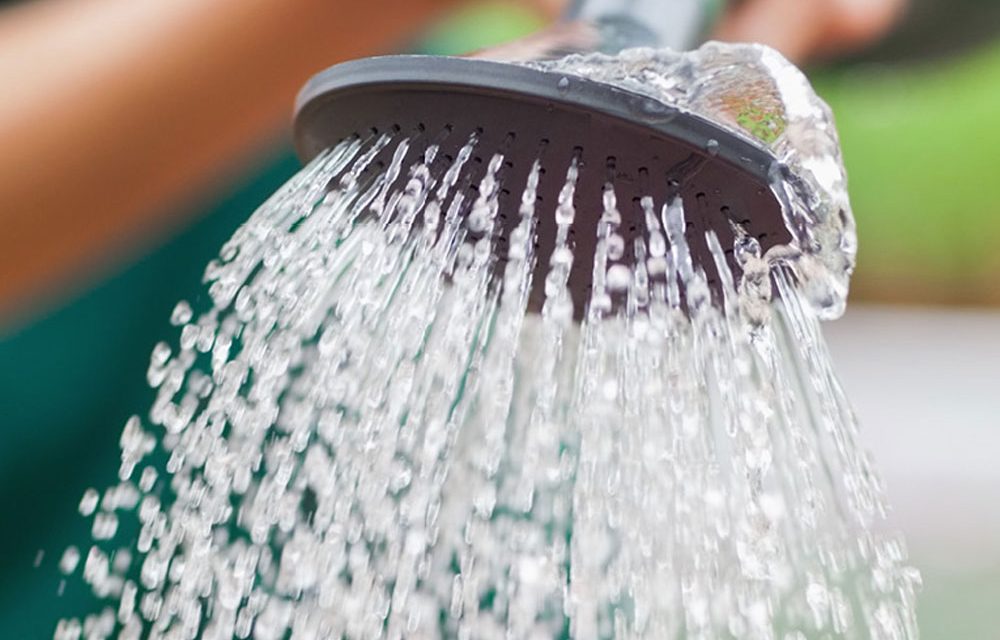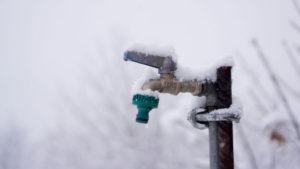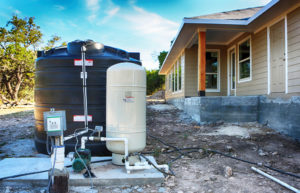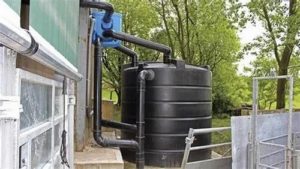DIY greywater harvesting is an exciting and empowering way to take control of your water usage and make a positive impact on the environment.
By building your own greywater system, you can repurpose precious rainwater and reduce your reliance on municipal water supplies.
With the right materials and some basic know-how, anyone can construct a DIY greywater harvesting system that is both functional and sustainable.
We will walk you through the step-by-step process of building your own system, from designing and installing the pipes to choosing the best plants for irrigation.
Whether you’re a seasoned DIYer or just starting out, our comprehensive instructions and expert advice will have you harvesting greywater in no time!
Determine your needs and goals
Before starting your DIY greywater harvesting project, it’s important to assess your needs and goals. Consider how much water you want to collect, how you plan to use it, and what type of system will work best for your property and budget.
This involves considering how much water you want to collect, how you plan to use it, and what type of system will work best for your property and budget.
For example, if you want to collect greywater for irrigation, you’ll need to determine how much water your plants require and how often you need to water them.
This will help you determine the size of your greywater harvesting system and the type of storage tank and piping you’ll need.
It’s important to consider your budget and the feasibility of the project.
By clearly defining your needs and goals, you can ensure that your DIY greywater harvesting project is tailored to your specific situation and needs, resulting in a more effective and efficient system.
Choose a collection method
Greywater can be collected from a variety of sources, such as showers, sinks, and washing machines. Choose the best collection method for your needs and budget.
When it comes to collecting greywater, there are several options to choose from, each with its own set of benefits and drawbacks.
For example, shower greywater collection systems are often the most straightforward to install, as they typically involve connecting a simple diverter valve to the shower drain.
This valve directs greywater into a storage tank, where it can be used for irrigation or flushing toilets.
Sink greywater collection systems, on the other hand, may require more extensive plumbing modifications, as they often involve rerouting the sink’s drain line to a storage tank.
Washing machine greywater collection systems are also an option, but they can be more complicated and expensive to install.
These systems typically involve connecting a hose to the washing machine’s drain pipe and routing it to a storage tank.
Regardless of which collection method you choose, it’s important to consider your needs and budget carefully, as some methods may be more suitable for your specific situation than others.
Be sure to consult local regulations and guidelines before installing any greywater collection system to ensure that it meets all necessary safety and health standards.
Select a filtration system
It’s important to filter out any contaminants and debris from the greywater before using it. There are many different types of filtration systems available, including biological and physical systems.
Choosing an appropriate filtration system is important when using greywater for irrigation or other non-potable purposes.
Contaminants and debris in greywater can pose health risks and damage plants, so effective filtration is essential to ensure the water is safe and suitable for use.
There are two main types of filtration systems: biological and physical.
Biological systems use living organisms to break down organic matter and remove contaminants, while physical systems rely on mechanical processes to filter out solids and other impurities.
Physical systems can include sedimentation, sieving, and screening processes, while biological systems may utilize bacteria, fungi, or other microorganisms to break down organic matter.
Depending on the specific needs and limitations of your project, you may choose to use a combination of both biological and physical filtration systems to ensure the best results.
By properly selecting and implementing a filtration system, you can effectively remove contaminants and debris from greywater, making it safe for use in irrigation, toilet flushing, and other non-potable applications.
Design and build the system
Once you have your collection and filtration methods in place, it’s time to design and build your system. This may include pipes, pumps, and storage tanks. Be sure to consider the size and capacity of your system, as well as any necessary safety features.
Designing and building your rainwater harvesting system is the next step after establishing your collection and filtration methods.
This involves selecting and installing the appropriate pipes, pumps, and storage tanks to ensure a reliable and efficient system.
When designing your system, consider the size and capacity of your storage tanks, as well as the flow rate and pressure requirements of your pumps.
It’s also important to incorporate safety features, such as overflow prevention and backflow protection, to ensure the safety of your system and the people who use it.
Be sure to choose materials that are durable and resistant to corrosion, and consider the environmental impact of your system.
Proper design and installation of your system will ensure a long-lasting and efficient rainwater harvesting system that provides a reliable source of water for your home or business.
Install the system
With your design and materials in hand, it’s time to install your greywater harvesting system. Follow all relevant safety precautions and building codes when installing your system.
Installing your greywater harvesting system is an exciting step towards water sustainability!
With your design and materials in hand, you’re ready to begin.
It’s essential to follow all relevant safety precautions and building codes during the installation process to ensure the system operates safely and effectively.
First, disconnect the downspout from the gutter downstream of the roof.
Install the diverter valve to direct greywater into the storage tank.
Use PVC or CPVC pipes for the conveyance system, and connect them securely.
Make sure all connections are watertight, and use elbows and T-connectors as needed.
Install the storage tank, choosing a location with easy access and proper drainage.
Connect the conveyance pipes to the inlet of the storage tank.
Use a submersible pump to circulate the greywater within the storage tank.
Install a sedimentation basin before the distribution pipe to remove any sediment or debris.
After the installation, verify all connections and test the system’s integrity by filling the storage tank with water.
Conduct regular maintenance to ensure proper functioning and longevity of the system.
Test and maintain the system
After installation, it’s important to test and maintain your system regularly to ensure it’s functioning properly. This may include checking for leaks, cleaning filters, and monitoring water quality.
After installing your home water filtration system, it’s important to regularly test and maintain it to ensure optimal performance and effectiveness.
This involves checking for any leaks in the system, cleaning or replacing filters as needed, and monitoring the water quality to ensure it meets your desired standards.
To test for leaks, simply turn on the system and monitor it for any signs of moisture or water pooling around the connections or fittings.
If you notice any leaks, address them promptly to avoid water damage or contamination.
To clean or replace filters, follow the manufacturer’s guidelines for the specific type of filter your system uses.
Typically, this involves periodically replacing the filters with new ones to maintain the system’s ability to remove impurities from the water.
It’s essential to monitor the water quality regularly to ensure the system is functioning effectively.
This may involve testing the water for various contaminants, such as lead, chlorine, or bacteria, and making any necessary adjustments to the system to maintain the desired water quality standards.
Use the system efficiently
Once your system is up and running, be sure to use the harvested water efficiently. This may include installing low-flow fixtures and appliances, and using the greywater for irrigation or flushing toilets.
To truly make the most of your harvested water, it’s essential to use it efficiently.
This can be achieved by installing low-flow fixtures and appliances, such as low-flow showerheads and toilets, which can help reduce water waste and consumption.
You can use the greywater (wastewater generated from sinks, showers, and washing machines) for irrigation purposes, such as watering your garden or flushing toilets.
This will not only save potable water but also help reduce the amount of wastewater that needs to be treated and disposed of.
By using the harvested water efficiently, you can save money on your water bill, reduce your environmental footprint, and contribute to a more sustainable future.
Monitor and adjust
As with any system, it’s important to monitor and adjust your greywater harvesting system as needed. Be sure to check for any issues or problems, and make adjustments to improve efficiency and effectiveness.
Monitoring and adjusting your greywater harvesting system is important to ensure its optimal performance and longevity.
Regularly check the system for any signs of leaks, clogs, or other issues that may impede the flow of greywater.
Adjust the system as needed to improve efficiency and effectiveness.
For example, you may need to adjust the slope of the pipes or the size of the storage tank to optimize water flow and storage.
Monitor the water quality and adjust the treatment process as needed to ensure that the greywater is safe for use in your garden or other designated areas.
By regularly monitoring and adjusting your greywater harvesting system, you can ensure that it continues to function effectively and efficiently, providing you with a reliable source of water for your garden and saving you money on your water bill.
Want More? Dive Deeper Here!
Hey there! If you’re the type who loves going down the rabbit hole of information (like we do), you’re in the right spot. We’ve pulled together some cool reads and resources that dive a bit deeper into the stuff we chat about on our site. Whether you’re just killing time or super into the topic, these picks might just be what you’re looking for. Happy reading!






